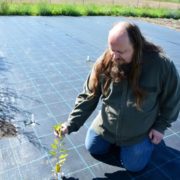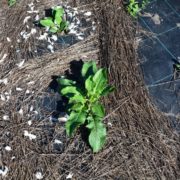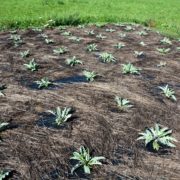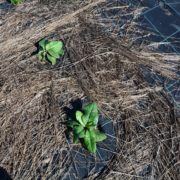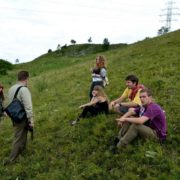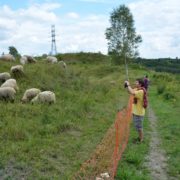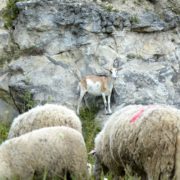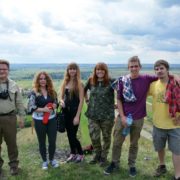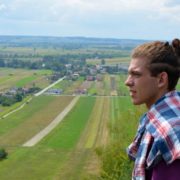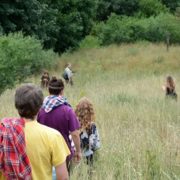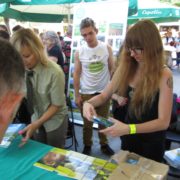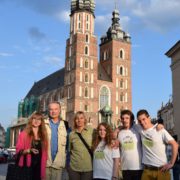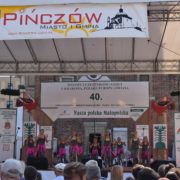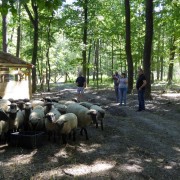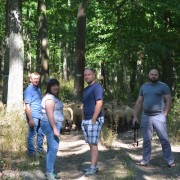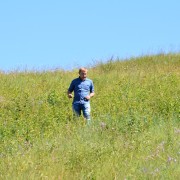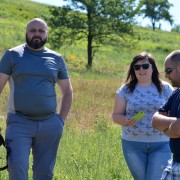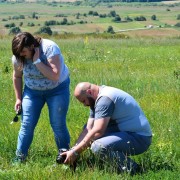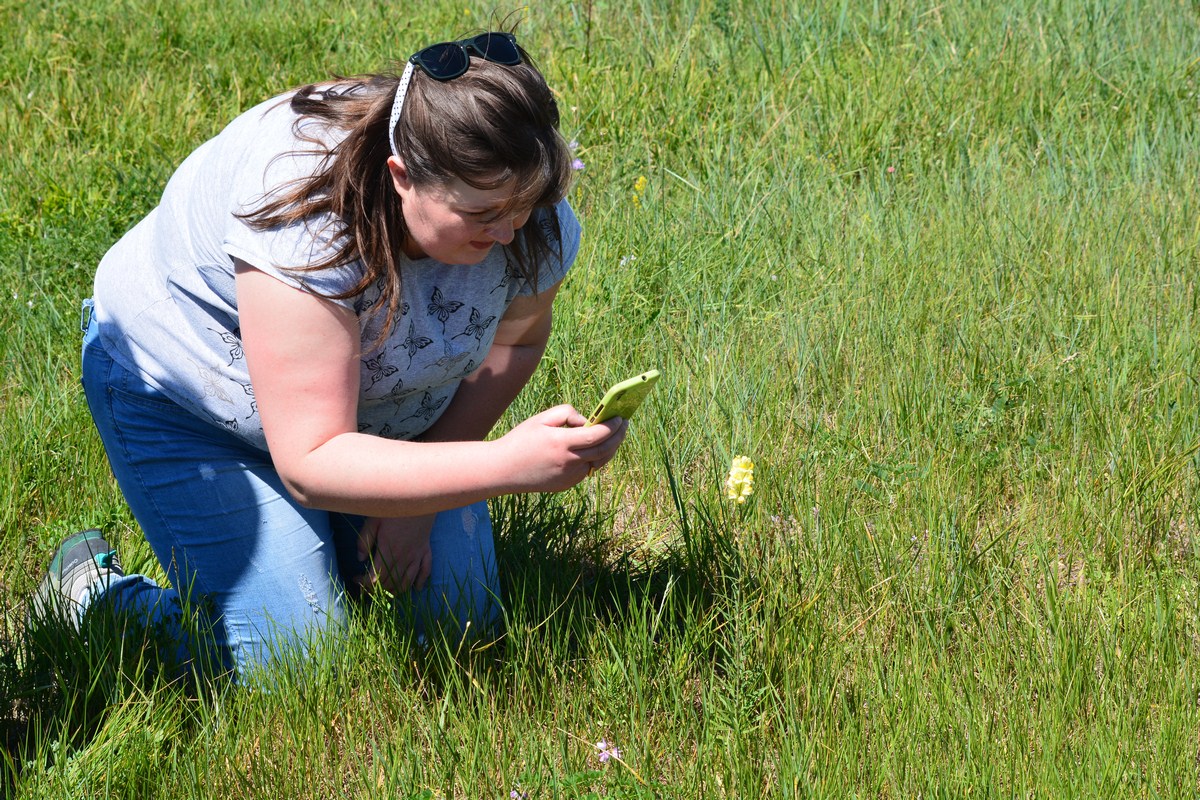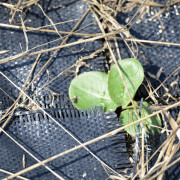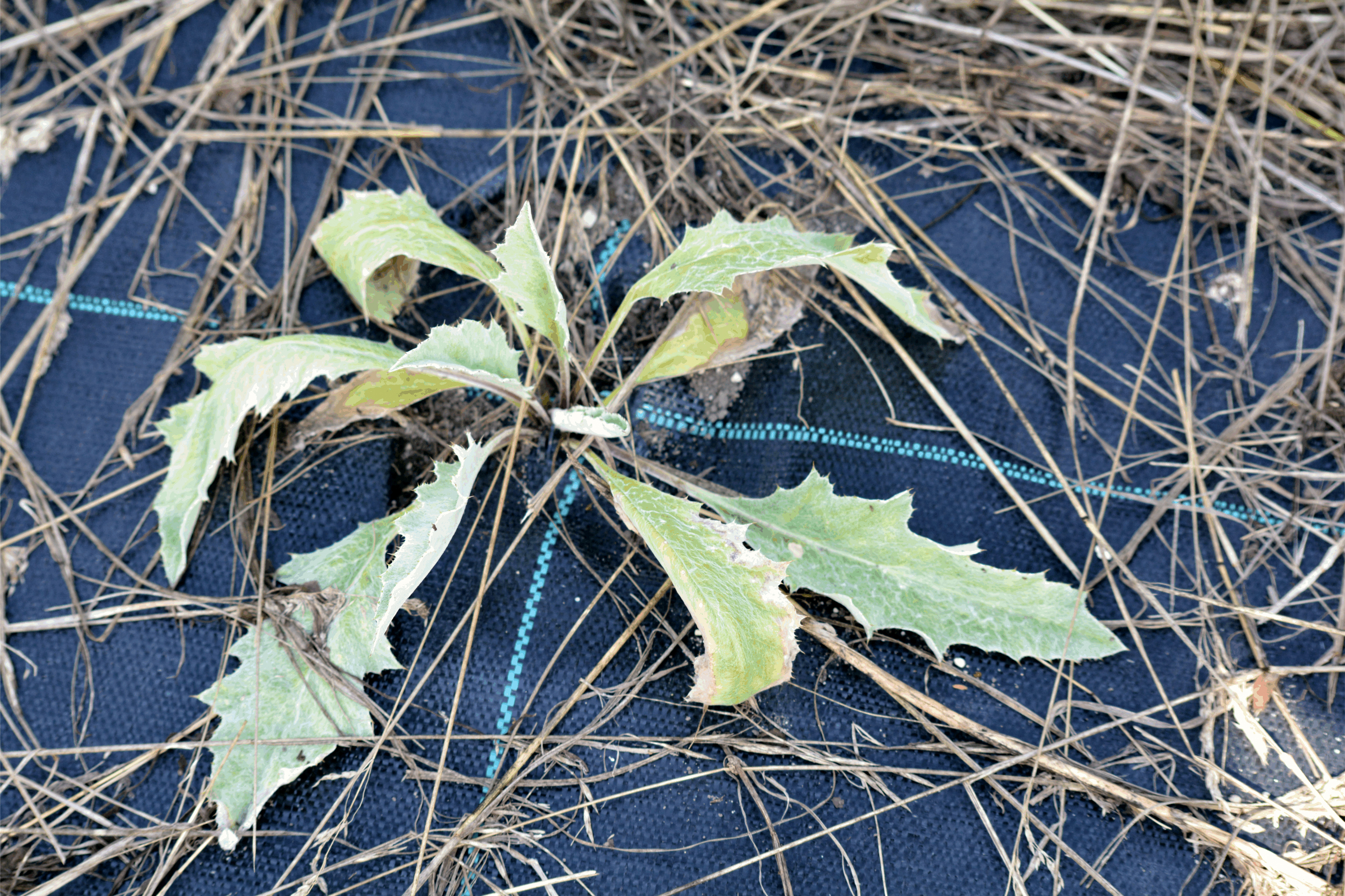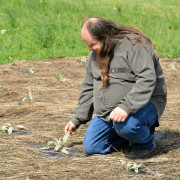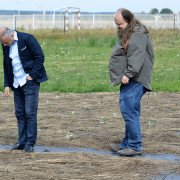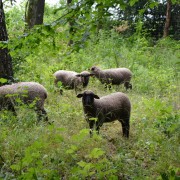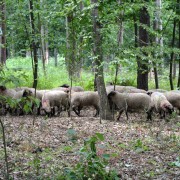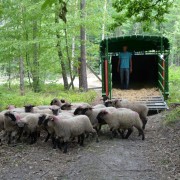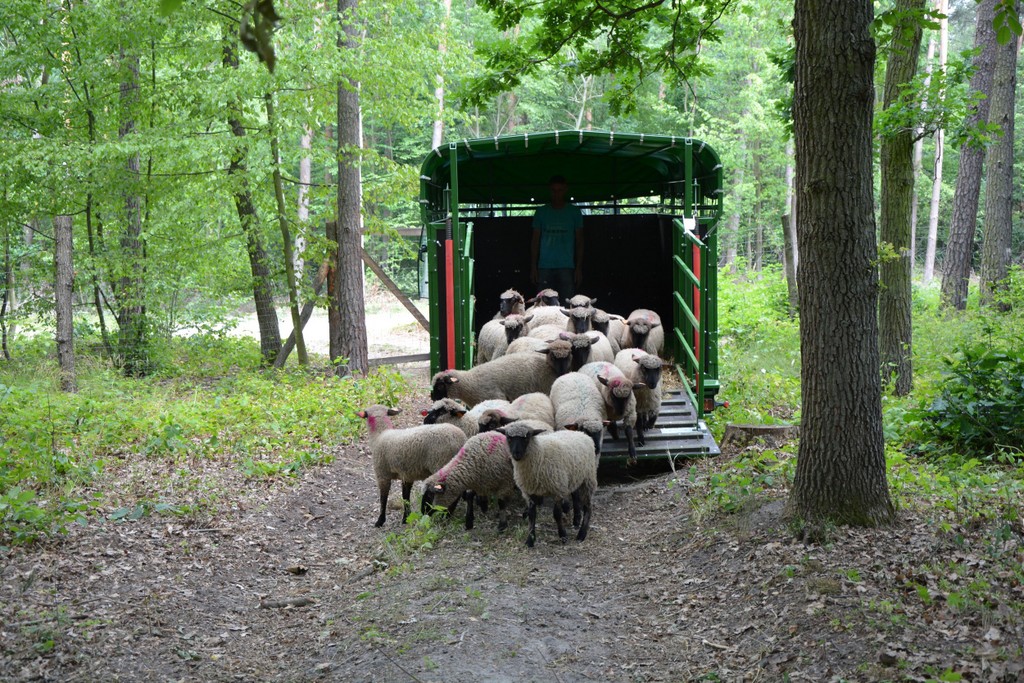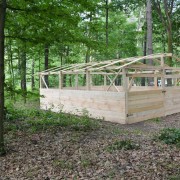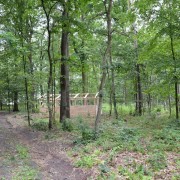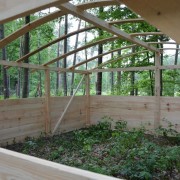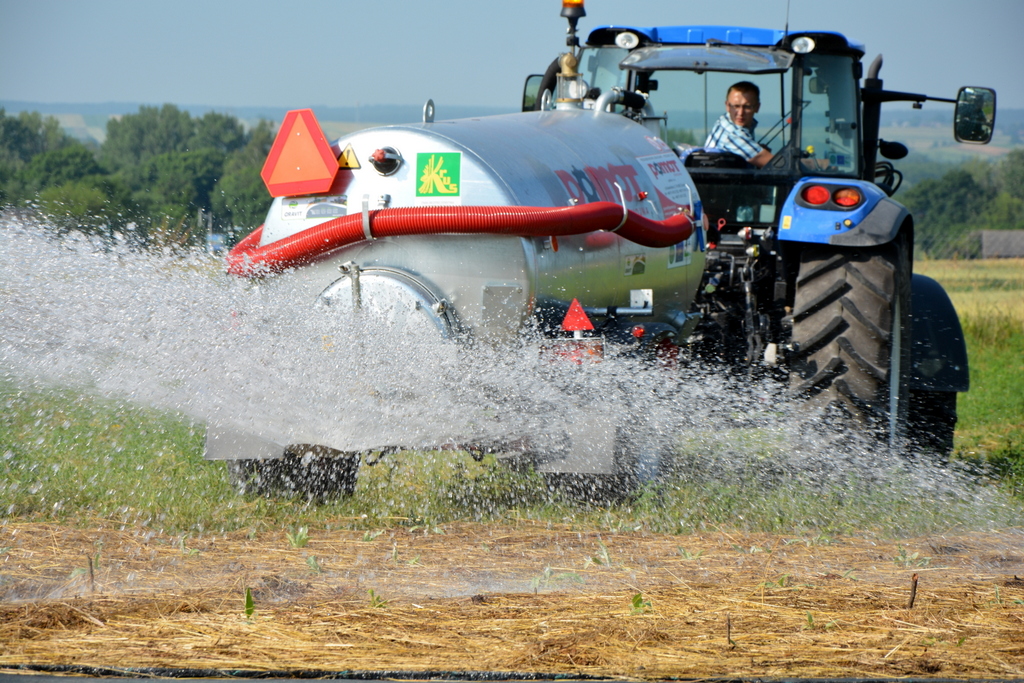News
The conference summarizing the LIFE10 NAT/PL/654 project
On the 15th and 16th of September, we participated in the conference summarizing the LIFE10 NAT/PL/654 project “Building a blue ecological corridor along the River Ina valley and its tributaries” (“Budowa niebieskiego korytarza ekologicznego wzdłuż doliny rzeki Iny i jej dopływów”), carried out in West Pomerania by the West Pomeranian Board of Land Amelioration and Water Facilities and the Regional Directorate for Environmental Protection in Szczecin.
The project included the construction of fish ladders enabling free migration of salmonid species up and down the River Ina, which enables fish to reach their breeding grounds and settle in appropriate biotopes. The River Ina and its tributaries form an ecological corridor connecting several Natura 2000 areas valuable for West Pomerania. Over the last years, the quality of water in the River Ina and its tributaries has improved, whereas the existing hydrotechnical structures like sluices, dams, hydroelectric power plants and malfunctioning fish ladders posed the biggest threat to the survival of many species of fish.
While carrying out the project, 28 fish ladders and a breeding ground for fish were built, and 23 kilometres of the River Ina bank were afforested. Thanks to this, salmonids could reach their breeding grounds in the upper parts of the River Ina and its tributaries. The biological patency of the river was restored, which was the precondition for the proper functioning of the river ecosystem.
Besides, the conference was a great opportunity to share experiences among teams carrying out other LIFE+ projects, also regarding the protection of valuable habitats of xerothermic grasslands through pasturage.
On the plantation
The plants we planted in the spring on the plantation in Krzyżanowice are in various condition. The Carlina L. plants, which look impressive, have endured the July heat best of all. According to Dr. W. Szymański, they should also take root at their target sites.
The Stipa joannis Čelak plants, only several pieces of which we have managed to grow, look worst. Besides, only a few specimens of Prunus fruticosa have survived the summer heat. However, those that have survived the difficult period look excellent. They are healthy and tall, and they give a lot of joy to our scientific consultant, which can be proved by the picture where Mr Wojtek is proudly presenting his work.
The continuation of patrols over the xerothermic grasslands covered by the LIFE+ programme, which were started last autumn
On Tuesday, August 16th, we continued patrols over the xerothermic grasslands covered by the LIFE+ programme, which had been started last autumn. We explored the area of Garb Pińczowski; from the Skowronno reserve to Serpentyna, that is, the Nida Wildlife Sanctuary. This time we could see the effects of the pasturage carried out for several weeks at the Serpentyna site.
The group consisted of seven people, and it was international, as apart from ZŚiNPK employees and the LIFE team, the following people participated in the patrol: Agnieszka, Paula and Barbara, geography, Polish and forestry students, as well as Nicolo from the University of Venice and Fabio from Portugal (both invited to Poland by the Foundation for Creative Space and Development CampoSfera from Klimontów).
We found some remains of a bonfire built on the outskirts of the habitat, but the team focused mainly on the location of the protected specimens of Carlina onopordifolia, which the trainees were made familiar with. An attraction for the whole group was to watch the flock pasturing at Serpentyna. The rock walls of the former quarry with the sheep and goats grazing at their base did create a unique scenery that cannot be found anywhere else at Ponidzie.
40th International Folk Art Fair at the Cracow Market Square
It was already the 40th edition of the International Folk Art Fair at the Cracow Market Square, which was filled with dozens of stalls where folk artists presented and sold their products. Thursday, August 18th, was the Day of Pińczów at the Fair. It was an opportunity to remind the visitors that it had been during the assembly of 5 June 1257 on the common land near Kopernia that Prince Boleslaus Pudicus had signed the act making Cracow a town chartered according to the Magdeburg law.
The Cracow inhabitants and numerous tourists enthusiastically greeted a colourful Pińczów procession conducted by a firemen’s orchestra. Music groups, folk bands, a dancing group, and even kindergarten pupils from Węchadłów; they all had an opportunity to give a performance in front of a large audience. While the artists were performing on stage, the crowds of people were visiting Pińczów stalls, where Ponidzie delicacies were sold.
Our stall, that of the Landscape Park Complex of the Świętokrzyskie and Nadnidziańskie Region, was among them too. We were presenting our publications: maps, picture albums, and brochures.
We told the visitors about our work and informed those who were interested about the details of the LIFE+ programme and the active protection of xerothermic grasslands, why we carry out sheep pasturing projects, and why we had chosen the Blackhead breed.
We were greatly helped by our trainees: Paula and Agnieszka, students from Radom, as well as Fabio from Portugal and Nicolo from Italy, both of whom had been invited to Poland by the Foundation for Creative Space and Development CampoSfera with its registered office in Klimontów.
A visit of the team carrying out the “Silesian” LIFE programme
From 21st to 22nd of July 2016, three employees of the Landscape Park Complex of the Silesian Region (ZPKWŚ), where the LIFE 11 NAT/PL/432 project “The protection of non-forest habitats of great natural interest, typical of the area of the Eagles’ Nests Landscape Park” (“Ochrona cennych przyrodniczo siedlisk nieleśnych, charakterystycznych dla obszaru Parku Krajobrazowego Orlich Gniazd”) is being carried out, visited Ponidzie to see the progress of carrying out our LIFE13 NAT/PL/000038 project “The protection of habitats of great natural interest at the Ponidzie region” (“Ochrona cennych siedlisk przyrodniczych na Ponidziu”).
Wojciech Sołtysiak, the project manager, and Mateusz Łukasik, a monitoring specialist, who are both employees of the Landscape Park Complex of the Świętokrzyskie and Nadnidziańskie Region (ZŚiNPK) took part in the meeting, whereas ZPKWŚ was represented by three people: Artur Wojtasik, the manager; Piotr Niedbał, an assistant manager; and Milena Ziętek, who is in charge of wildlife sanctuaries.
It was a good opportunity to discuss the realization of the LIFE projects. The team from Małopolska is already finishing their project and at the Ponidzie region we are now putting sheep out to the grasslands designed for pasturage. Therefore, we could make use of their knowledge and experience regarding the supervision of pasturing and the methods of ensuring the stability of the project on completion.
Our guests, as naturalists, were particularly interested in the species of plants that do not grow in the area of Jura Krakowsko – Częstochowska.
Our project has received coverage by various media.
Our project has received coverage by various media.
Below you will find included an article by. Dorota Kosierkiewicz from Kielce WeeklyeM of 10 July 2016.
An unusual plantation.
Our plantation of protected plants in Krzyżanowice has endured the recent heat wave quite well. The current condition of both carlinaonopordifolia and serratula lycopifolia suggests that our efforts to expand the population of these plants will result in a success.
The plantation is being systematically looked after by our scientific consultant PhD Wojciech Szymanski and in his assessment, the whole process is progressing well. The attached photos depict W. Szymanski during his systematic evaluation of the plantation.
„The hounds have dashed into the forest …”
„The hounds have dashed into the forest …”
The first sentence of „Ashes” by S. Żeromski perfectly describes the situation in which, after time-consuming procedures and appeals related to the tender on our blackheads, the sheep finally started grazing on picturesque xerothermic grasslands of Ponidzie. But before that, the whole flock (200 sheep) had endured the adaptation process in Ponidzie, in Mazovian Center of Animal Breeding and Reproduction in Brześć near Pińczów very well. The division of the large flock into several smaller ones proved to be an extremely difficult task, but after a few days of hard work in the heat, our sheep found their way to shepherds of Ponidzie.
The photo depicts the blackheads before their journey to xerothermic grasslands.
Thermophilic oak woods.
The shed for our sheep located in Forest District Pińców in so called „sparse oak woods” presents itself attractively and professionally. It is worth recalling that our project is an innovative one, meant to improve the condition of sparse oak woods by means of sheep grazing. The project is an original idea of Director T. Hałatkiewisz and, just like every other boss’s idea, it is treated as a priority.
Mateusz fighting with the heat.
The great heat wave is already over, but taking care of our plantations of protected plants is still one of the main tasks of our LIFE+ group. Thanks to systematic irrigation, the plants have endured the difficult moments in great condition and everything indicates that they will remain in such until they are moved to their permanent locations. The photo depicts Mateusz on his steel steed in action.


















